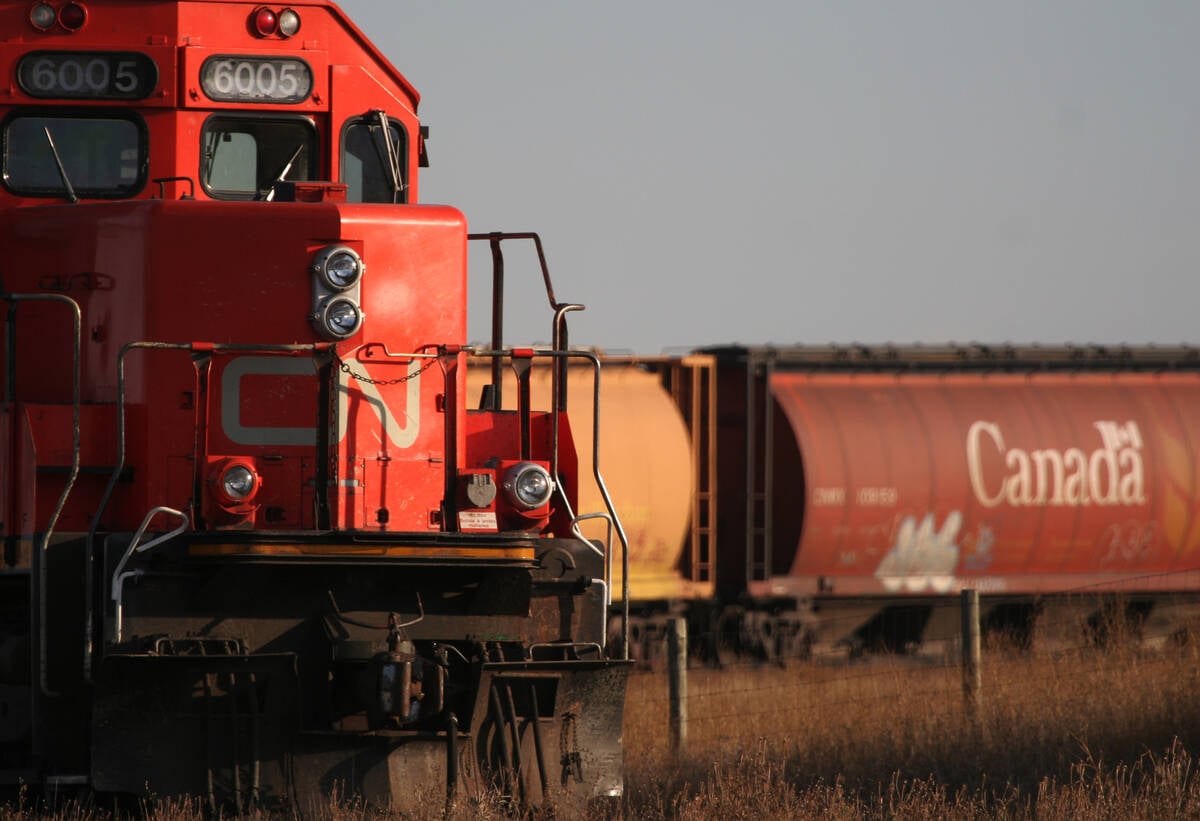John McGlone gives his audience a sow’s-eye view of what most swine see each day.
In a short, close-up video clip, a sow methodically bites the bars of her .6 metre by 2.1 metre crate.
The Texas Tech University researcher said it’s a behavior that some sows spend up to 25 percent of their time doing.
Although it may be linked to stress, McGlone said researchers can’t explain it.
But that doesn’t really matter.
“How do you think the consumer is going to view this behavior?” McGlone asked hog farmers at a seminar on Jan. 31.
Read Also

Working groups established to address challenges in the containerized and bulk movement of commodities
CN is working with the pulse and special crops sector on resolving challenges in shipping those commodities.
Since the 1950s, confinement systems have become the most common way in the world to raise sows and weanlings.
But McGlone said there are signs this may change.
Consumers want pork that comes from happy pigs, he said, and they perceive that sows that can move around are happier than sows in crates.
Surveys consistently show 60 to 70 percent of American consumers are concerned about animal welfare, and are willing to pay up to five cents a pound more for assurances their meat is raised humanely, McGlone said.
“Consumers wouldn’t notice a 10 percent rise in the cost of pork.”
Of those consumers, 24 percent said price is not even an issue. McGlone noted humanely raised pork sells for more than twice the average retail prices in some upscale American meat stores.
“What I think about these people is there’s an opportunity there … that’s not being met.”
McGlone points to savvy marketers like California’s Niman Ranch (www.nimanranch.com) that have earned rave reviews and premium prices for selling pork from family farms that keep sows in pastures or in barns with bedding.
The company pays its producers a premium of six cents per pound, he said.
McGlone encouraged farmers to investigate new sow housing systems, and turn the challenge into a marketing opportunity.
He said trying to educate consumers about the way pork is raised in an effort to change their minds is noble but futile.
“We cannot afford to educate the consumers. There’s too many of them and too few of us.”
He told producers that group housing can be cheaper than or equal to confinement systems and that performance is remarkably similar if the stockmanship is good.
“It’s a myth that a crate is required to have low pre-weaning mortalities,” he said.
Research from Denmark shows pre-weaning mortality rates of 18.3 percent in group housing, compared to 18.7 percent in crates.
United Kingdom studies show mortality rates of 11.9 percent in group housing with arc-style farrowing pens, compared to 11 percent for crates.
The right type of farrowing pen is key, said McGlone, noting the old three-metre by three-metre pen is likely to increase mortality rates.
Weather can be a challenge, he said, but producers in cold and rainy climates in northern Europe have conquered it.
Group housing also decreases sow mortality rates dramatically, he said. Average sow mortality rates in the United States are more than 10 percent, while studies at his university have rates under two percent.
After hearing McGlone’s presentation, one farmer pointed out he provides his sows with shelter and the perfect feeding conditions in his confinement system.
It was consumers who forced farmers to use confinement systems in the first place, the farmer said, because they wanted cheap pork.
“A big part is consumers’ fault.”
Manitoba Pork Council vice-president Danny Kleinsasser told farmers to keep their minds open to alternative systems.
“Reality is, boys, it’s coming,” he said.














